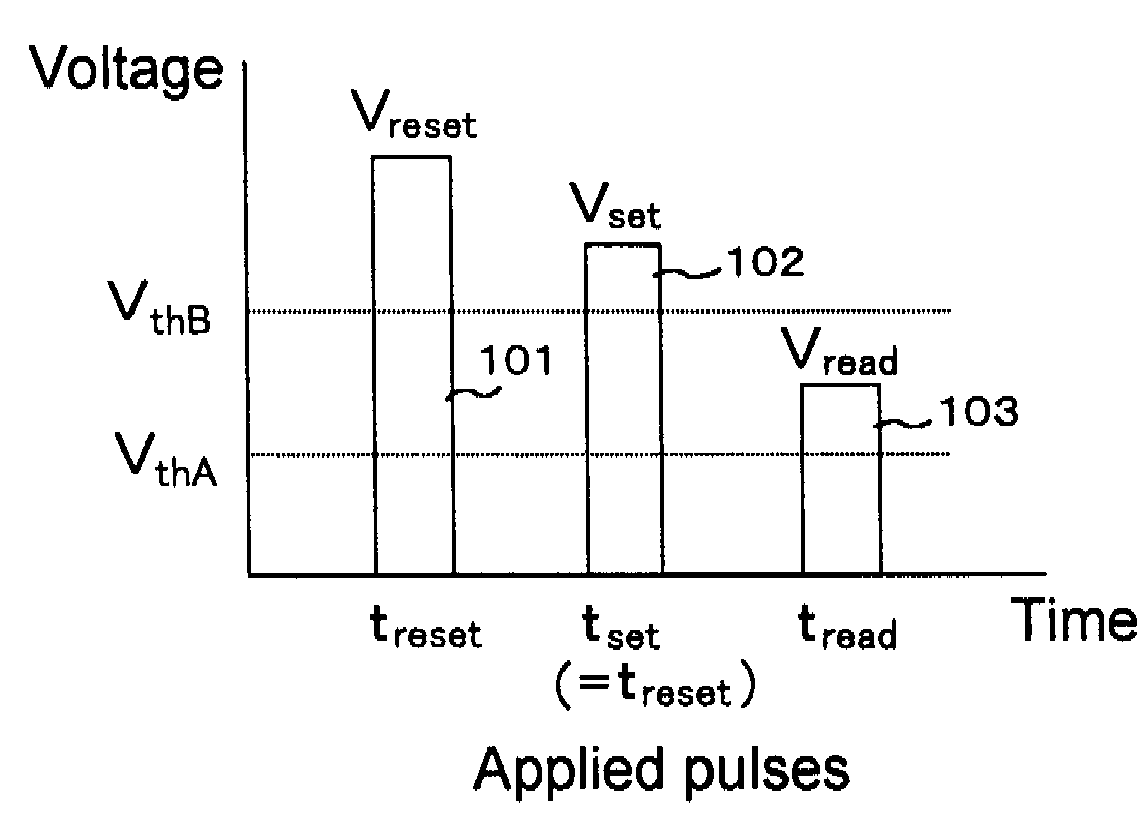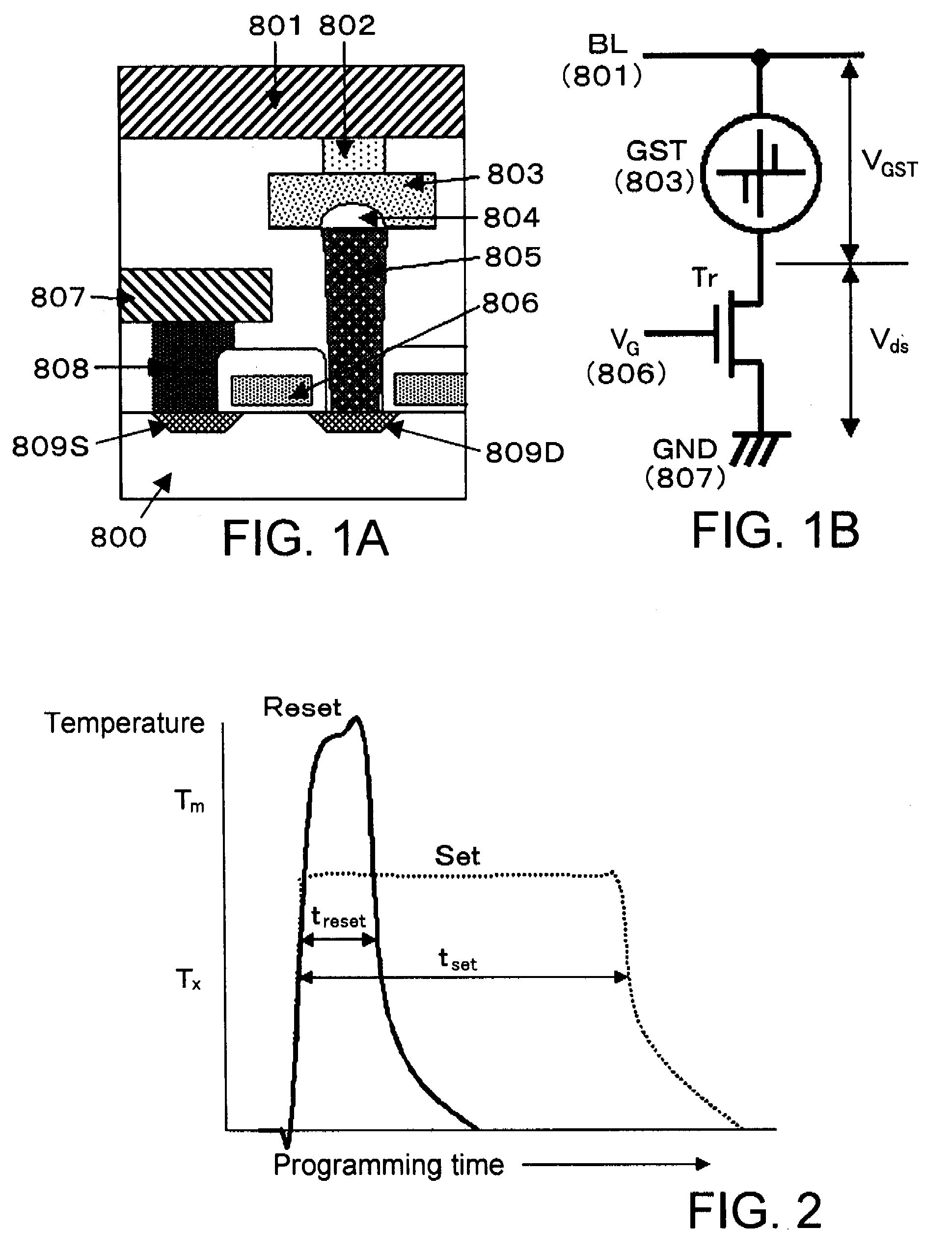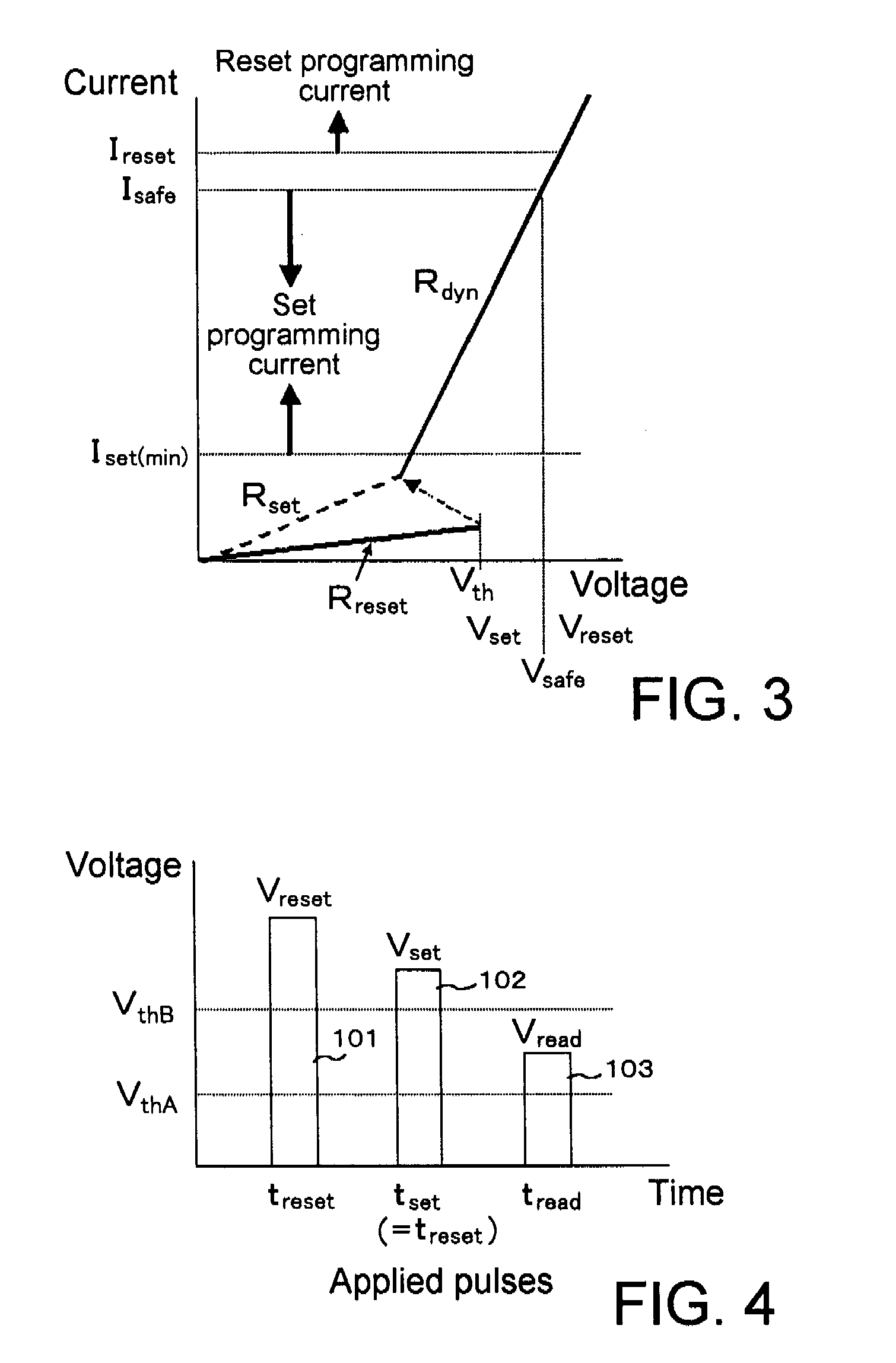Method for programming phase-change memory and method for reading date from the same
- Summary
- Abstract
- Description
- Claims
- Application Information
AI Technical Summary
Benefits of technology
Problems solved by technology
Method used
Image
Examples
first exemplary embodiment
[0046]FIG. 4 shows the voltage waveform of programming pulses and a read pulse based on the method of programming a phase-change memory according to the first exemplary embodiment. As described in the foregoing explanation, there are two types of programming pulses; a resetting pulse used for placing a phase-change element that is in the crystalline state into the amorphous state, and a setting pulse used for placing the phase-change element that is in the amorphous state into the crystalline state. A read pulse is not a pulse for changing the phase state of the phase-change element but rather a pulse applied to the phase-change element for reading the phase state of the phase-change element.
[0047]In the first exemplary embodiment, resetting pulse 101 is a pulse having voltage Vreset for supplying the current necessary for placing a phase-change element that is in the crystalline state into the amorphous state, and has a pulse width treset necessary for making the change to the amor...
second exemplary embodiment
[0068]Explanation next regards the second exemplary embodiment of the present invention. FIG. 9 shows the current-voltage characteristic for a case in which dynamic resistance Rdyn is set to approximately twice the value used in the phase-change memory of the first exemplary embodiment. Dynamic resistance Rdyn can be made high resistance by selecting the material making up the heater Making the dynamic resistance higher improves the efficiency of heat generation. Put more simply, doubling dynamic resistance Rdyn causes doubling of R in the expression (I2R) that represents the amount of generated heat, whereby the efficiency of heat generation also doubles. As a result, when the resistance value of the phase-change element is programmed to the same value, the reset and set currents in the second exemplary embodiment can be decreased to Ireset1 and Iset1, respectively, which are lower values than in the first exemplary embodiment. This reduction of current is obviously preferable from...
PUM
 Login to View More
Login to View More Abstract
Description
Claims
Application Information
 Login to View More
Login to View More - R&D
- Intellectual Property
- Life Sciences
- Materials
- Tech Scout
- Unparalleled Data Quality
- Higher Quality Content
- 60% Fewer Hallucinations
Browse by: Latest US Patents, China's latest patents, Technical Efficacy Thesaurus, Application Domain, Technology Topic, Popular Technical Reports.
© 2025 PatSnap. All rights reserved.Legal|Privacy policy|Modern Slavery Act Transparency Statement|Sitemap|About US| Contact US: help@patsnap.com



